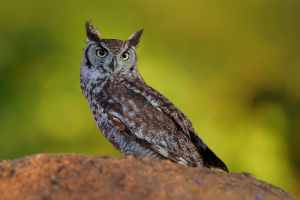Little egret, an elegant water bird, is known for its slender figure and snow-white feathers in wetland ecosystems.
As a member of the heron family, the little egret is more than just a beautiful natural landscape.
It plays a key role in diverse ecological environments worldwide, and its lifestyle, hunting strategies, and migration behavior are fascinating.
The little egret is small, usually about 55 to 65 cm long with a wingspan of about 88 to 106 cm. Its feathers are as white as snow, shining slightly in the sun, especially during the breeding season, when the decorative feathers on the back and chest become more striking.
They have a slender black beak with a slightly curved tip, which is well-suited for catching fast-moving prey. Their legs are long and black, while their toes are yellow, creating a sharp contrast that makes them particularly eye-catching in mudflats and shallow waters.
Inhabiting rivers, lakes, swamps, salt-alkali land, and coastal areas, the little egret is skilled at foraging in shallow water. They hunt with agility, often standing still to wait for prey to come close patiently, then striking quickly with their beaks to catch fish, insects, crustaceans, and amphibians.
In addition, the little egret sometimes actively pursues its prey by moving quickly in shallow water, even stirring the bottom to expose hidden animals. This intelligent foraging strategy demonstrates their high adaptability to their environment.
During the breeding season, which typically occurs between spring and summer, little egrets display brighter breeding feathers and make special calls to attract mates. They often build nests in groups, sometimes alongside other heron species, forming breeding colonies.
The nests, usually constructed on trees, are made from simple materials like branches and reeds. The female lays three to five blue-green eggs, which are incubated by both parents for about 21 to 25 days.
Once the chicks hatch, they are covered in gray-white down feathers, and both parents take turns feeding them. The young birds can fly independently after about six weeks.
Though they appear peaceful and serene, little egrets are highly adaptable when it comes to migration and habitat selection. They are found across temperate, subtropical, and tropical regions worldwide.
While some populations remain in their habitats year-round, others, especially those living in northern areas, migrate south to warmer regions before winter.
Their migration patterns and destinations vary based on location and climate, with some populations traveling thousands of kilometers. Migration not only helps them avoid the cold but also allows them to respond to seasonal shifts in food availability.
Historically, the little egret has left its mark on human culture. In Europe, from the late 19th century to the early 20th century, their beautiful feathers were highly prized in the fashion industry, particularly for use in hat decorations.
This demand nearly drove the species to extinction. However, as environmental awareness grew, conservation movements emerged, leading to the establishment of laws protecting wild birds in many countries. This was a key milestone in modern bird conservation.
Despite their wide distribution, little egrets face ongoing threats to their survival. Habitat destruction, particularly the loss of wetlands due to urbanization, poses a significant challenge. As wetlands are filled and developed, little egrets lose crucial habitats.
Additionally, pollution, particularly water contamination from chemicals like pesticides and heavy metals, threatens their health. These toxins accumulate through the food chain, reducing the reproductive success and survival of little egrets.
Fortunately, many countries have recognized the importance of protecting wetland ecosystems and have taken steps to conserve the little egret and other wetland species.
Nature reserves, wetland restoration projects, and pollution control efforts aim to create safe habitats for these birds. International cooperation and research provide further opportunities for their protection.
Little Egrets are not only a source of visual enjoyment but also serve as a reminder of the fragility and significance of wetland ecosystems. Their elegance and resilience highlight the harmony and beauty of nature, urging us to reflect on how to better protect and cherish these remarkable creatures with whom we share the planet.


